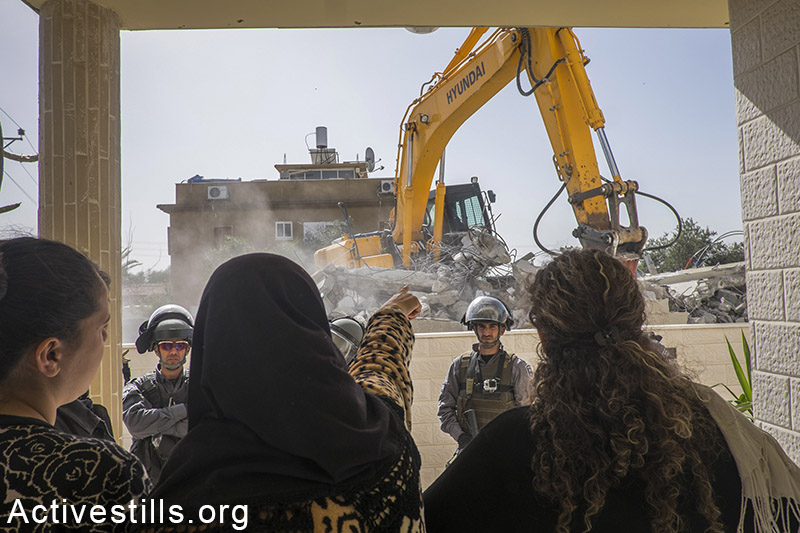
In 2005, Amnon Raz-Krakotzkin, a professor of Jewish history at Ben-Gurion University known to his friends and associates simply as Nono, published a seminal article titled “There is No God, But He Promised Us the Land.” The article, published in Hebrew in Mitaam, an Israeli journal devoted to literature and radical political thought, captured perfectly the spirit of the Zionists who founded the State of Israel. While Judaism may have been the source behind the fervor to re-claim Zion, Nono wrote, those who envisioned and founded the State of Israel only used it inasmuch as it provided them a vehicle for demographic and territorial power in their nascent state.
For instance, the national symbols, created upon the formal establishment of the state, have always been inextricably tied to Judaism. The best example is the national flag, whose double stripes are based on the patterns found on the tallit (Jewish prayer shawl). Turning Jewish symbols into national ones was never very difficult; the difficult part was converting the most valuable resource in the country into a national (read: Jewish) asset. That resource, of course, was land.
From the founding of the state until 1966, approximately 90 percent of Palestinian citizens — those who neither fled nor were expelled during the 1948 war — were placed under a military regime. In the Galilee, the Negev and the Triangle, Palestinian citizens (who were given the right to vote in Israeli elections) were subject to a harsh permit regime, strict curfews and very often coerced collaboration (for more, see Hillel Cohen’s “Good Arabs” and Shira Robinson’s “Citizen Strangers”).
It was during this time that Israel’s secular regime expropriated the land of Palestinians refugees who had fled the country as well as much of the land belonging to those who remained. Passing a swath of legislation in the 1950s under the guise of the Absentee Property Law, the new regime transferred land that had — just years earlier — belonged to Palestinians, to the Israel Land Administration. In fact much of the justifications given by Israeli authorities for building settlements in the West Bank are identical to those given for many of the new towns and cities that were built in the years following the establishment of the state. None of this could have been done without a plan for what the authorities themselves termed Yehud, or Judaization of the land.
By the time military rule over Palestinian citizens was lifted in 1966 (less than a year before the Six Day War and the beginning of the occupation), much of that land had already been Judaized. Kibbutzim, moshavim, development towns and new cities were built atop destroyed Palestinian villages, often in order to prevent the return of Palestinian refugees to their homes and land. Land, not rebuilding the Third Temple, became the national symbol through which Israel’s leaders could redeem their people in their ancient homeland. After all, there is no God, but He promised them the land.
On March 11, 1976, the Israeli government declared its intention to expropriate 20,000 dunams (4,940 acres) of land between the villages of Sakhnin and Arraba, much of it Arab-owned. The Agriculture Ministry openly declared that the primary purpose of the plan was to alter the demographic nature of Galilee in order to create a Jewish majority there. The long-term plan was called Yehud Ha’Galil” (Judaization of the Galilee), which would be enacted through the building of mitzpim — small Jewish settlements consisting of few families — in between Palestinian villages in order to halt Arab territorial contiguity.
What happened on March 30 of that year came to be known as Youm al-Ard, Land Day. Curfews were imposed on the major Arab cities and villages in the Galilee, Palestinians announced a national strike and flooded the streets with protests. They burned tires, threw stones and molotov cocktails. The Israeli army, which was sent to put down the demonstrations with armored vehicles and tanks, killed four Palestinian protesters. The police killed another two. One hundred were wounded, while hundreds of others were arrested.
In retrospect, the protest did little to stop the expropriation plan. The number of mitzpim established reached 26 in 1981 and 52 in 1988. These mitzpim and the development towns of Upper Nazareth, Ma’alot, Migdal Ha’emeq and Carmiel significantly altered the demography of the Galilee, bringing in an influx of Jews to break up the prospect of adjacent Arab localities.
The events of Land Day took place almost nine years after Israel occupied the West Bank and the Gaza Strip. Since then, much focus has been placed on the Israeli government’s settlement policies, its land expropriation, its restrictions on movement, its permit regime, its coercive collaboration, among others. But we must not lose sight of the trajectory: much of what the Israeli government has and continues to do in the occupied territories was done in the pre-1967 years to Palestinian citizens.
The reasons to mark the Land Day are too numerous to list in any one article. But this year, as American liberals search for that disappearing sweet spot between “democratic Israel” and the undemocratic occupation, we ought to remember that the Judaization of Palestinian land is part of the DNA of the Jewish state, on whichever side of the Green Line it happens to operate.


